Hidden Christian Villages: Route around Fukue Island's Churches

Goto is the home of hidden Christian villages that maintained their faith through more than two centuries of strict oppression. This route takes you around the churches that still stand on Fukue Island, as well as sites connected to “Silence,” a movie about the suppression of early Christianity in Japan.
Churches are places of prayer. Please follow their etiquette, and refrain from visiting during Mass and other religious ceremonies.
- Time required:Day Trip
- Transportation:Car
Contents
START
Fukue Port Terminal

Within the terminal, you will find transport company offices, souvenir shops, restaurants, a tourist information center, convenience stores, etc., and you can spot Mt. Onidake from the second-floor observatory. When you arrive, the first thing you should do is pick up helpful pamphlets from the tourist information center.
There are also coin lockers within the terminal.
| Address | 853-0015 長崎県五島市東浜町2-3-1 |
|---|
About 10 minutes by car
Mukata no Hama Beach
[Site connected with the movie "Silence"]
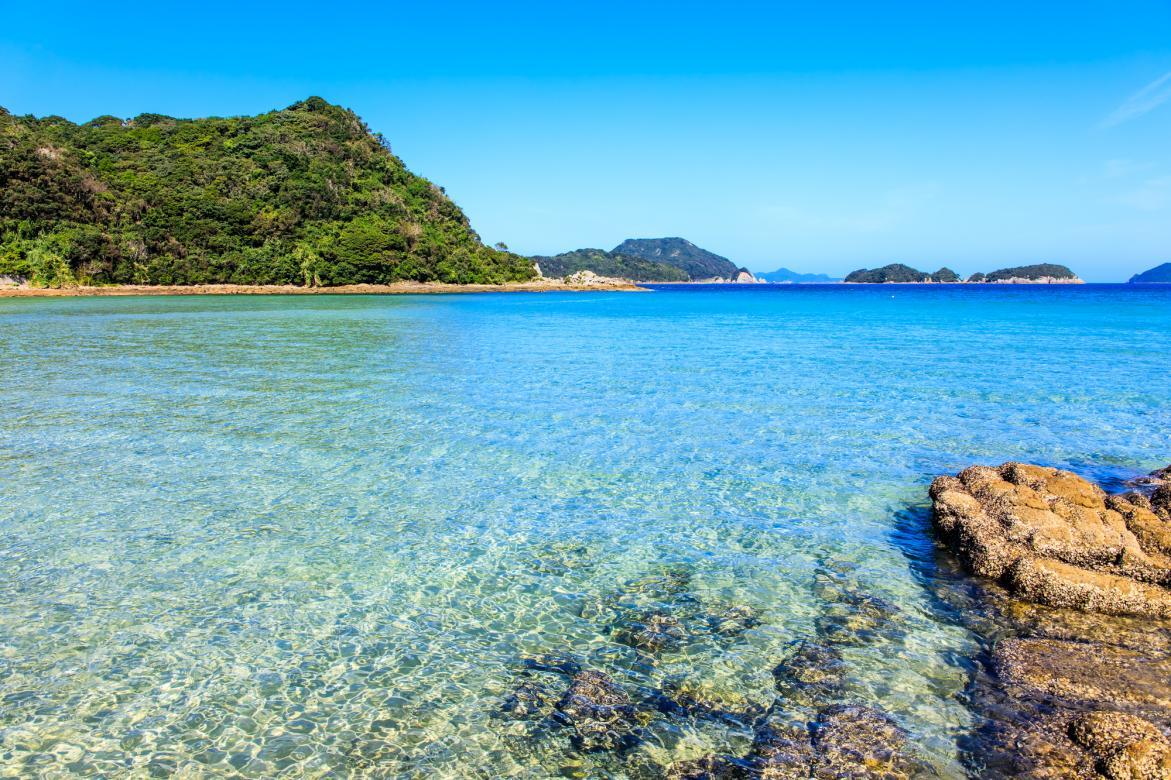
In 1797, Goto domain requested that people move from Omura domain to develop the land, and so 108 people moved to Goto from Mukata no Hama Beach. It is said that almost all of them were hidden Christians.
This small beach is located in a quiet cove around 15 minutes from Fukue Port; it is the closest cove to the city area. The waters are so clear you can see small fish swimming around.
| Address | 長崎県五島市平蔵町 |
|---|
About 10 minutes by car
Dozaki Church
[Site connected with the movie "Silence"]

Soon after the ban on Christianity was lifted by the Meiji government, two French missionaries, fathers Fraineau and Marmand, were sent to Goto in order to take part to the revival of the local Christian community. Father Marmand established a first wooden church in Goto, in 1879.
Dozaki Church was rebuilt in red bricks in 1908 under the guidance of Father Pélu, a missionary who succeeded Marmand and Fraineau. Some of the materials were brought all the way from Italy. The inside of the church is made of wood, with typical stained glass and ribbed vault ceiling.
Today, various documents and objects showing us the history of the Christians’ persecution are displayed in Dozaki.
The building has been registered as prefectural tangible heritage in 1974.
| Address | 853-0053 長崎県五島市奥浦町堂崎2019 | |
|---|---|---|
| Telephone Number | 0959-73-0705 | |
| Opening Times | Nov. 11th~Mar. 20th 9:00~16:00 Nov. 21st ~Nov. 10th 9:00~17:00 (Open until 18:00 during summer vacation) |
|
| Closed | December 30–January 3 |
About 30 minutes by car
Mizunoura Church
A lilywhite wooden church, masterful blend of Romanesque, Gothic and Japanese architecture.

The history of Mizunoura Christians is said to have started when five men from Sotome (located north of Nagasaki City) moved there together with their families in 1797 as part of the Goto and Omura feudal domains policies.
A first church was built in 1880 but didn’t last long and deteriorated quickly. The church was rebuilt into its current appearance in 1938 by famed architect Yosuke Tetsukawa.
The lilywhite wooden church, a masterful mix of Romanesque, Gothic and Japanese architecture, is the biggest wooden church in Goto, and the contrast between its white spire and the blue of the seas seems to come right out of a postcard.
The hill behind the church features a statue of St John Soan de Goto and remains of a prison from the ban on Christianity era.
| Address | 853-0701 長崎県五島市岐宿町岐宿1643-1 |
|---|
About 5 minutes by car
Kusuhara Prison Ruins
A building used as a prison

A crackdown on Christians started at the end of 1868, known as the Goto Kuzure crackdown. As part of this, Christians in Kusuhara were also investigated. The current building is a reconstruction of the building used as a prison at the time.
| Address | 長崎県五島市岐宿町東楠原 |
|---|
About 1 minutes by car
Kusuhara Church
A red-brick church

The Kusuhara area was a place of settlement for some of the first foreign Christians who landed at Mukata no Hama Beach. During the Goto Kuzure crackdown, which started on Hisaka Island, believers from this area were also arrested. This church was built after the public notices announcing the ban on Christianity were removed.
| Address | 長崎県五島市岐宿町楠原736番地3 |
|---|
About 10 minutes by car
Japanese Restaurant Chiharu
Eatery & Japanese restaurant
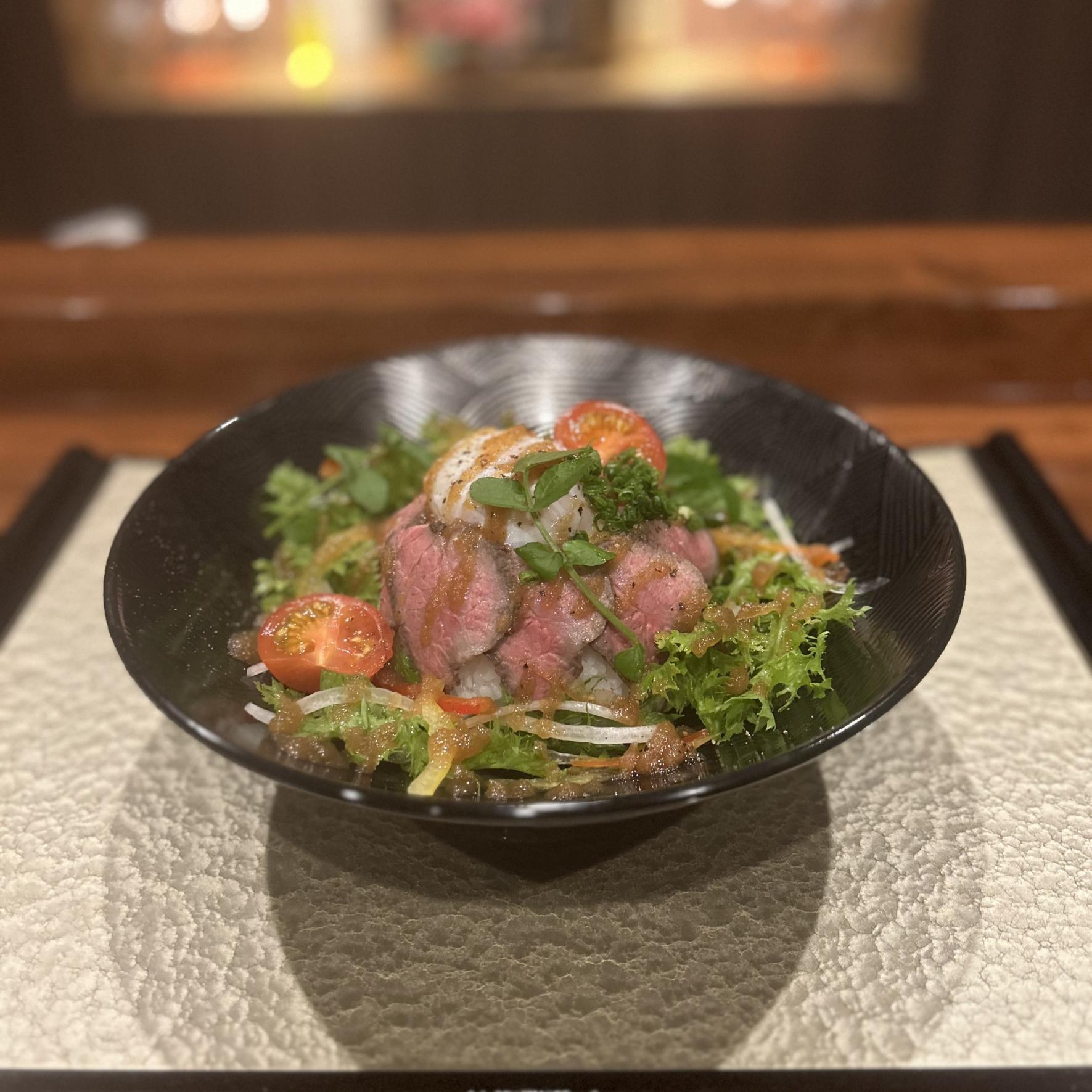
At lunchtime, this business operates as a cheap eatery, offering a varied menu that includes udon and rice bowls. It also provides a menu only available through reservations, so be sure to make inquiries.
| Address | 長崎県五島市岐宿町中嶽1984-1 | |
|---|---|---|
| Telephone Number | 080-6260-1274 | |
| Opening Times | Lunch (eatery): 11:00 to 14:30 (last orders: 14:00) Night (Japanese restaurant) *By reservation only |
|
| Closed | Every Tuesday |
About 25 minutes by car
Imochiura Church and Lourdes Grotto
The first Lourdes grotto in Japan, built with stones gathered by appealing to the local believers.

The story of Imochiura starts when hidden Christians from Omura domain moved to Imochiura to work in salt factories.
Upon hearing in 1891 that a replica of the Lourdes grotto was being built in Vatican City, father Pélu who was tasked with reviving the Catholic faith in Goto at the time, gathered enough beautifully shaped rocks with the help of local believers to build the first Lourdes grotto in Japan in 1899.
Drinking this miraculous water is said to be a cure for many illnesses and the grotto rapidly acquired a holy-ground status among Japanese believers.
| Address | 853-0411 長崎県五島市玉之浦町玉之浦1243番地 |
|---|
About 40 minutes by car
Kaitsu Church
A white-walled church

This wooden church was built by Christians. The small spire on the roof, which has become its symbol, was put up during renovations carried out because the church was aging. Illuminations created by the red, blue and green light shining in through the stained glass color the warm space inside.
| Address | 長崎県五島市三井楽町貝津郷458 | |
|---|---|---|
| Opening Times | 9:00–17:00 *Entry may not be permitted during mass and ceremonies, and the church may also be closed. |
About 15 minutes by car
Miiraku Church
A church with beautiful stained glass

Miiraku has the longest history of Christian belief in Goto. The hidden Christians who fled persecution in Omura domain in 1797 secretly continued their faith here. A gothic-style wooden church was completed in 1880, and rebuilt as the current church in 1971.
The bright colors of the modern mosaic wall art were created with shells and ceramics, and the stained glass inside the church is beautifully made, right up to the details, with exquisite use of color and color schemes. The stained glass on the right as you enter the church shows the story of Christ, from birth to resurrection, while the stained glass on the left depicts the history of the Catholics in Goto.
| Address | 853-0607 長崎県五島市三井楽町岳1420 |
|---|
About 10 minutes by car
Fuchinomoto Catholic Graveyard
[Site connected with the movie "Silence"]
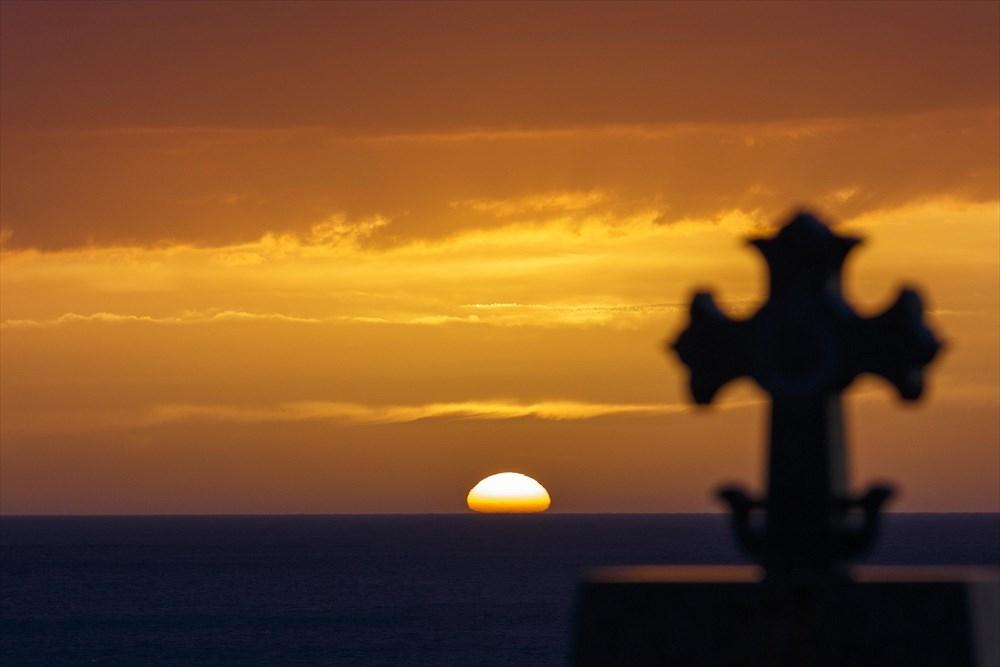
In 1776, 78 people from 14 farming families across the sea moved to Fuchinomoto in Miiraku Village in the hope of settling there. The Catholic graveyard in Fuchinomoto, standing in a corner of the grasslands facing the East China Sea, is the graveyard of the local Christians. It offers a mysteriously beautiful spectacle at sunset, when the orange sun sinks behind the Virgin Mary and the gravestones. Beyond the graveyard lies the East China Sea, where the ships carrying envoys to Tang China sailed, and you can see Sagano Island from here.
| Address | 853-0609 長崎県五島市三井楽町渕ノ元 | |
|---|---|---|
| Telephone Number | 0959-84-3162(三井楽支所) |
About 45 minutes by car
Fukue Port Terminal

| Address | 853-0015 長崎県五島市東浜町2-3-1 |
|---|
GOAL
Google Maps may not display correctly if left open for more than 1 day.


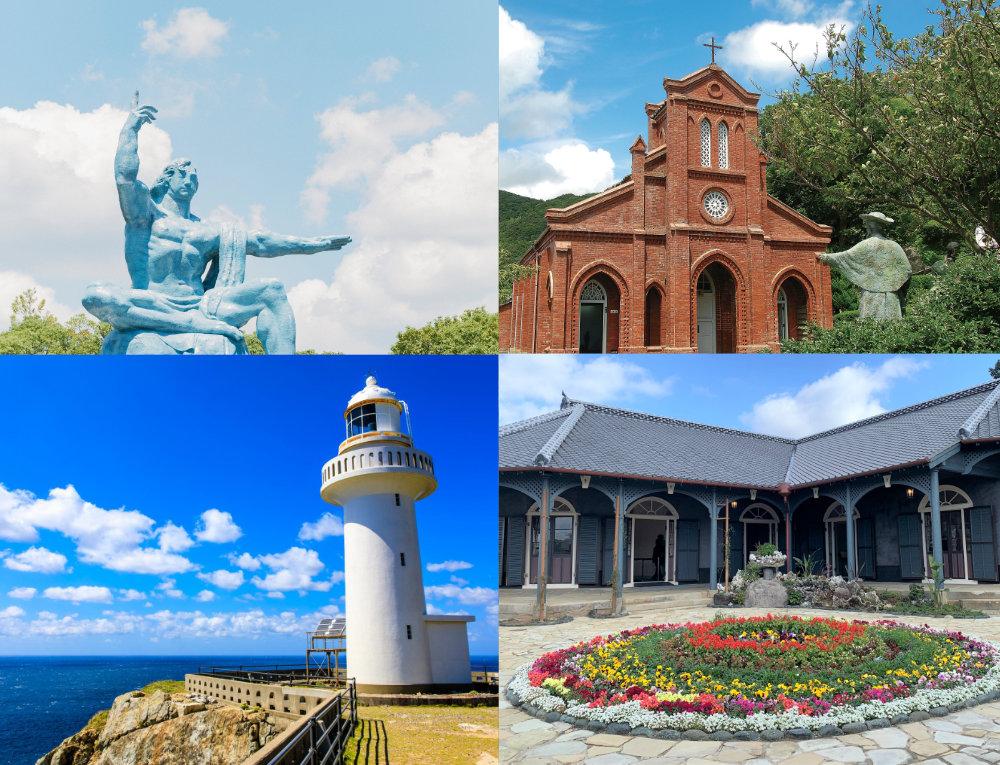
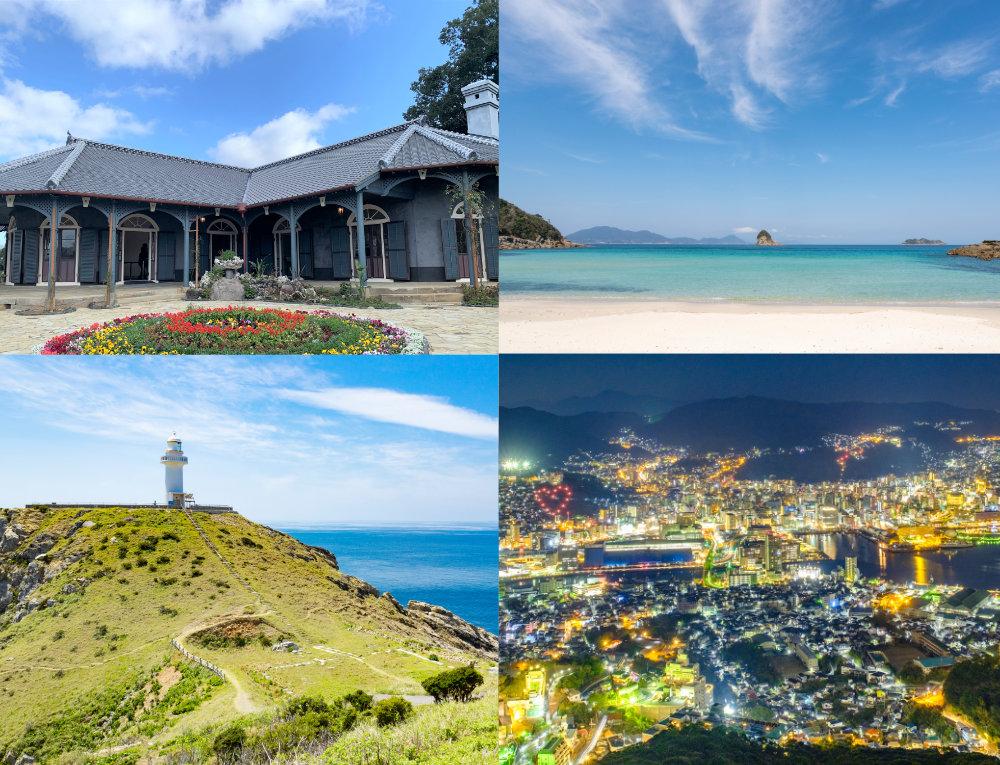
![[Starting from Nagasaki] Nagasaki sightseeing & Goto (Fukue Island): Fun route (4days)-1](https://goto.nagasaki-tabinet.com/storage/special_features/222/responsive_images/zHqlBrx66d2vjMullwTKPW3CgQ2g7dMRcmYgK7ss__1000_765.jpeg)
![[Starting from Kumamoto] Huis Ten Bosch & Nagasaki Chinatown: A self-indulgent route around Goto-1](https://goto.nagasaki-tabinet.com/storage/special_features/239/responsive_images/fZ4oFTx63NUiNFa10cgLZ87B3gxy0lacUexUk72r__1000_765.jpeg)
![[Starting from Kumamoto] Sightseeing in Kumamoto City & Unzen, Shimabara: A self-indulgent route around Goto-1](https://goto.nagasaki-tabinet.com/storage/special_features/238/responsive_images/dV5u9urj9uKWisf97c3i1QQP6s4nMNMusRv8qx13__1000_765.jpeg)





![[Starting from Fukue Port] Cycling around Mt. Onidake, Goto's symbol, and city streets-1](https://goto.nagasaki-tabinet.com/storage/special_features/243/responsive_images/cd1iWTkMDF9gv84Fj4srbOtvdG6tr3KZylI8Wg1S__1167_875.jpeg)
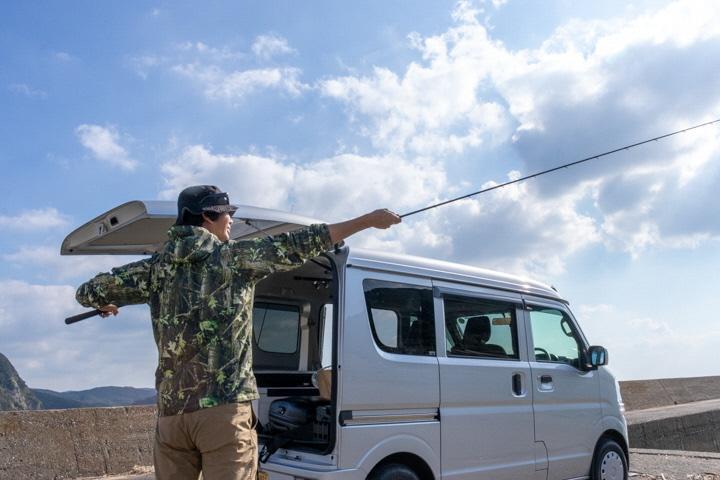

![[Starting from Hakata] Sightseeing in Fukuoka and Nagasaki & Goto (Fukue Island): Fun route (4days)-1](https://goto.nagasaki-tabinet.com/storage/special_features/221/responsive_images/PRTKDAvYWK8lxEjY6W9qsDAvPhqIVdKi3pw4IoG9__1000_765.jpeg)

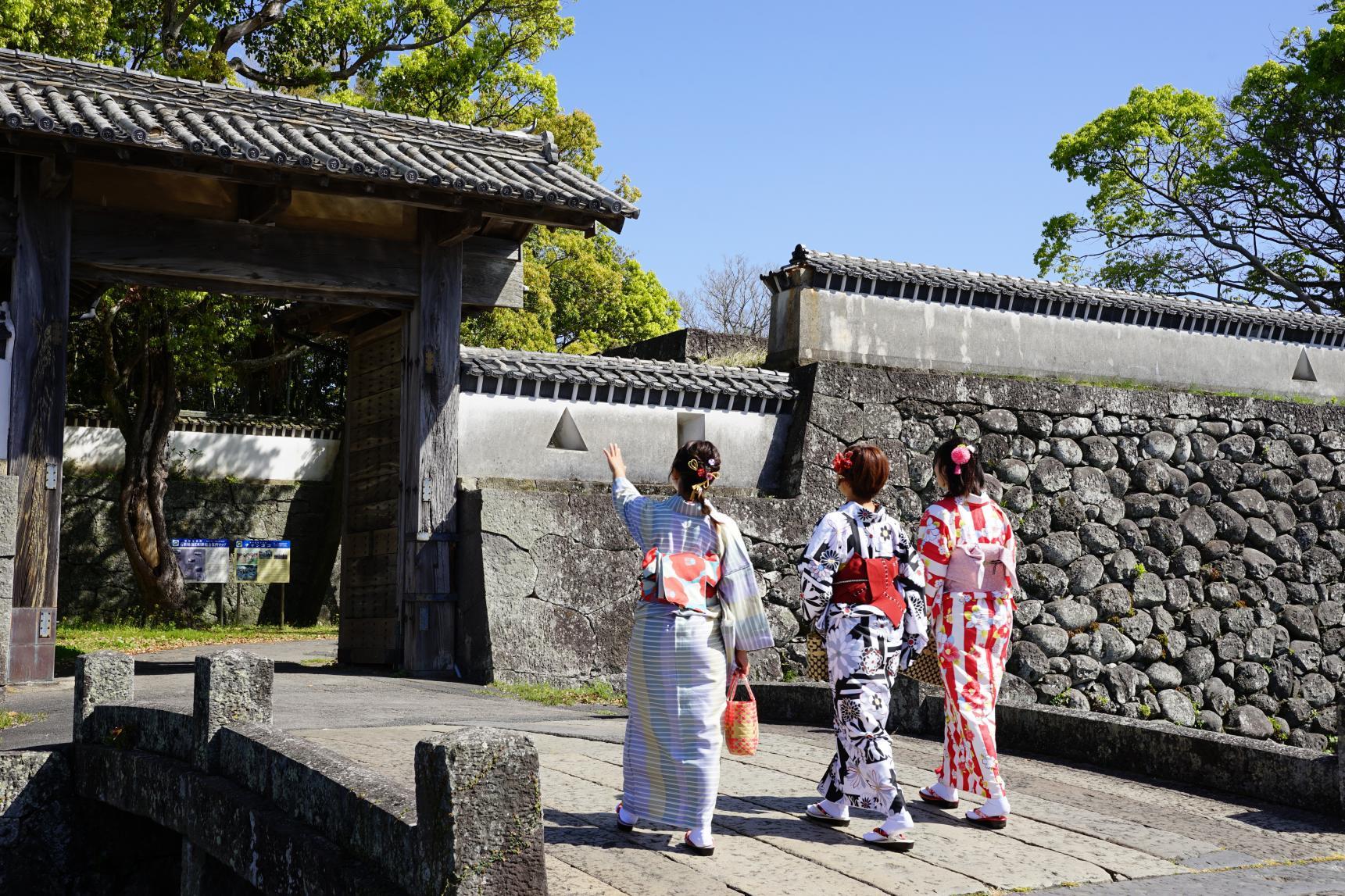

![[Starting from Kishiku] Cycling around scenic spots in the northern area-1](https://goto.nagasaki-tabinet.com/storage/special_features/244/responsive_images/Jnz9ajeQGLvpZ6DK5X3qdoTPbuFNhpBRWOdLxhPr__1171_850.jpeg)

